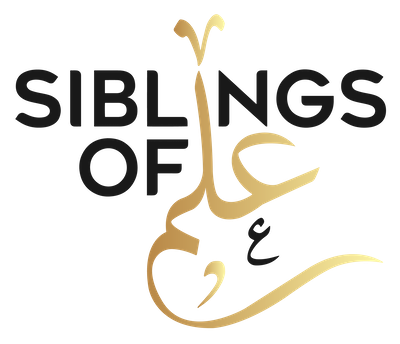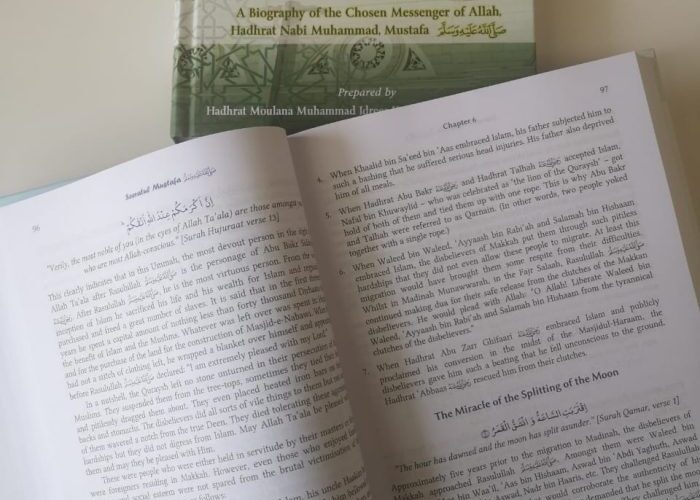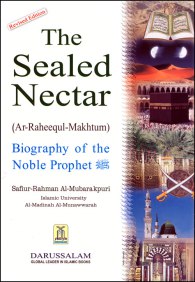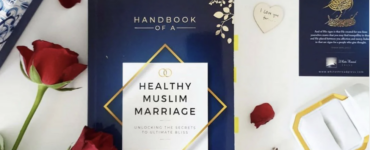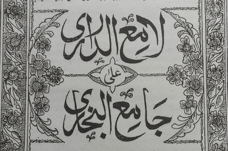The Need for a Role Model
In the course of life, every individual requires a role model and an inspiration. In history, we often come across great legends and wonder what motivated them to lead such exemplary lifestyles. However, Allāh Taʿālā blessed us with the most superior role model, the best individual to ever set foot on the face of this earth, our beloved Messenger, Prophet Muḥammad (peace be upon him). Allāh says:
لَـقَدۡ كَانَ فِىۡ قَصَصِهِمۡ عِبۡرَةٌ لِّاُولِى الۡاَلۡبَابِ
“Indeed in these stories there are morals for the people of understanding” [1]
Through the divine wisdom of Allāh Taʿālā, He presents us with many stories in the Qurʾān and Ḥadīth. On one hand, Allāh Taʿālā mentions those who disobeyed Him, which led to the incurrence of Allāh Taʿālā’s wrath. On the other hand, Allāh presents examples of His faithful servants who remained steadfast, resulting in reward in both worlds.
Ḥaḍrat Shah Waliyullah Muḥaddith Dehlawī (raḥimahullāh) explains that when Allāh addresses misguided groups in the Qurʾān, one should not assume these words are confined to those individuals from the past. Rather, if the same qualities are found within people of our time, then the result can be the same according to Allāh’s will. The Prophet Muḥammad (peace be upon him) mentions:
“You will indeed follow the footsteps of those before you.”[2]
Therefore, we should try our best to avoid following such evil traits and characteristics.[3] We should also engage in adopting praiseworthy traits found in the lives of our pious predecessors.
Importance of Studying the Sīrah
Regardless of how many books are written about the life of Prophet Muḥammad (peace be upon him), justice will never be done to his blessed personality. Studying his blessed life is incumbent upon every Muslim, as the life of the Prophet (peace be upon him) is a manual for life that teaches us how to behave in various scenarios and provides solutions to many of our problems.
We are greatly honoured to be from the nation led by the beloved of Allāh Taʿālā, and it is our duty to learn about our beloved Prophet (peace be upon him). Allāh Taʿālā says in the Holy Qurʾān:
لَقَدۡ كَانَ لَكُمۡ فِىۡ رَسُوۡلِ اللّٰهِ اُسۡوَةٌ حَسَنَةٌ
“Indeed there is a good role model for you in the Prophet ﷺ” [4]
Ḥaḍrat Maulānā (raḥimahullāh) mentions in his preface:
“It is more important to know about the Seerah of Prophet Muḥammad (peace be upon him) than to know about oneself in order to protect and preserve our faith. As well as being able to act upon the injunctions of Islām, if the existence and teachings of Prophet Muḥammad (peace be upon him) were overlooked and dismissed, then the survival of every believer’s faith is in danger. May Allāh protect us from this.”
Allāh says:
اَلنَّبِىُّ اَوۡلٰى بِالۡمُؤۡمِنِيۡنَ مِنۡ اَنۡفُسِهِمۡ
The Prophet is closer to the believers than their own selves.[5]
It is important that knowledge attained regarding Islām is from authentic and reliable sources. Imam Muḥammad (raḥimahullāh) would say, “Knowledge is religion so be careful who you seek knowledge from.” We should seek knowledge from individuals who remind us of Prophet Muḥammad (peace be upon him) and his beloved companions.
The Author: Life and Scholarship
The author of Seeratul Muṣṭafā, Ḥaḍrat Maulānā Ilyās Khandhlawī (raḥimahullāh), was Siddīqī, a descendant of Ḥaḍrat Abū Bakr aṣ-Ṣiddīq (radiyallāhu ʿanhu) from his paternal side and Farūqī, a descendant of Ḥaḍrat ʿUmar Farūq (radiyallāhu ʿanhu) from his maternal side. It was a speciality in his household to memorise the Qurʾān; hence, he memorised the Qurʾān at the age of 9.
His father sent him to Ḥakīmul Ummati Ḥaḍrat Maulānā Ashraf Alī Thanwī (raḥimahullāh) to begin his ʿĀlimiyyah studies. Later, Ḥakīmul Ummati presented Ḥaḍrat Maulānā Ilyās to Ḥaḍrat Maulānā Khālīl Aḥmad Sahāranpūrī for further study, where he also studied under Allāmah Ẓafār Aḥmad Uthmānī. He completed his ʿĀlimiyyah studies at the age of 19 and repeated his final year in the renowned Dārul ʿUlūm Deoband.
There, he studied under senior scholars such as Allāmah Anwar Shah Kashmīrī, Allāmah Shabbīr Aḥmad Uthmānī, Muftī ʿAzīzur Raḥmān, and Sayyid ʿAsghar Ḥussain (raḥimahumullāh). Students of Ḥaḍrat Maulānā include Qārī Ṭayyib Ṣāḥib and Muftī Shabbīr Aḥmad Uthmānī (raḥimahumullāh).
He taught classical texts including Jalālayn, Tafsīr Bayḍāwī, Mishkāt, Sunan Abī Dāwūd, Ṭaḥāwī, Bukhārī and many more. He held the post of Shaykh al-Tafsīr in Dārul ʿUlūm Deoband and the title of Shaykh al-Ḥadīth in Jamia Ashrafia Lahore, Pakistan.
Many books were compiled under the supervision of his superiors, such as Aḥkāmul Qurʾān, Maʿāriful Qurʾān (Urdu), Talīqus Ṣabīḥ (Arabic), and Seerat e Muṣṭafā (Urdu).
Distinctive Qualities of Seerat e Muṣṭafā
One of the greatest blessings of this Ummah is recognising that we have received the honour of preserving both words and actions of our beloved Prophet Muḥammad (peace be upon him) with an uninterrupted chain of narrations.
Historical books are often structured according to the dates of occurrence—life before Makkah, birth, childhood, youth, prophethood, etc.—in relation to the life of the Prophet (peace be upon him). For this reason, Ḥaḍrat Mawlānā mentions various dates of when events took place in the life of the Prophet (peace be upon him) and then states which opinion is stronger in terms of authenticity.
If there are two authentic opinions contradicting one another, Mawlānā reconciles between the two or states the reason why one opinion is stronger. Ḥaḍrat Mawlānā Idrīs Khandhlawī Ṣāḥib based his research upon authentic references and reliable narrations.
Morals and lessons are derived from each incident for the understanding of the reader. This way, the author portrays how to practically implement the teachings of the Prophet (peace be upon him).
This book was originally written in Urdu and later translated into English by the ʿUlamā of Madrasah Arabia Azaadville. It became a three-volume series, each volume consisting of approximately 500 pages. The book covers all the events that took place in relation to the Prophet (peace be upon him), including an in-depth explanation of his blessed lineage and family.
No book compares to the greatness of Seeratul Muṣṭafā due to the in-depth research and having the original authentic sources as the foundation. This book acts like an illuminating star in the dark sky of ignorance.
The book was later added to the Dars-e-Nizāmī syllabus in many Islamic institutes, including Dārul ʿUlūm Bury, where Ḥaḍrat Maulānā Yūsuf Moṭalā Ṣāḥib (raḥimahullāh) emphasised its importance.
Difference between the Complete and Abridged Versions
The two versions of Seeratul Muṣṭafā by Shaykh Muḥammad Idrīs Khandhlawī cater to different audiences, offering distinct reading experiences.
The original three-volume work is a comprehensive and scholarly masterpiece designed for advanced students and researchers. It includes various aqwāl (sayings) and narrations and incorporates the science of ʿIlmul Rijāl—the study of Ḥadīth narrators—which allows meticulous examination of sources and chains of transmission.
In contrast, the abridged edition offers a more accessible and focused narrative. It condenses the extensive academic content to highlight the main storyline of the Prophet’s life, omitting detailed scholarly discussions and variant opinions found in the full version, to provide a smoother, more direct account for a broader readership.
Among the book’s most striking features is its dual focus:
– Historical authenticity—ensuring the reader receives reliable narrations of the Prophet’s (peace be upon him) life.
– Practical application—deriving moral and spiritual lessons from each incident to show how the Seerah can be lived in daily practice.
The complete version of Seeratul Muṣṭafā includes thorough detail and requires a high level of understanding. It discusses the various scholarly opinions, evidence from the Qurʾān or Ḥadīth, and additional notes which extract lessons from the Seerah like pearls from the ocean.
For example, it explains why Allāh chose the age of forty for prophethood. It also gives practical advice, such as the significance of the Prophet (peace be upon him) informing Ḥaḍrat Khadījah first after the incident of revelation before anyone else, indicating that family members should be informed first of significant events.
Similarly, informing Waraqah, a knowledgeable person of the time, shows that we should also consult those with knowledge when encountering noteworthy incidents.
The complete version is filled with pearls like these. It also addresses modern-day objections, such as:
– Rationale behind the Shaqq al-Ṣadr,
– Khilāfah of Ḥaḍrat Abū Bakr aṣ-Ṣiddīq—and his Imāmah,
– The concept of Khilāfah and the question of why the Prophet (peace be upon him) did not appoint a Khalīfah,
– The difference between the Khilāfah and Imāmah systems,
– Inheritance of the Prophet (peace be upon him),
– Discussion of Ḥijāb,
– Ḥayāt an-Nabī,
– Concept of Tashabbuh.
These are just a few examples; throughout the book, many objections and their answers are addressed. Due to such detailed academic discussions not being meant for the general public but rather for ʿUlamā and students from Mishkāt and above, only they would truly value and understand the author’s points.
For this reason, an abridged version of Seerat al-Muṣṭafā was released by Jamiatul ʿUlamā KZN. The original transcript was simplified for easier understanding, making the book suitable for the public and makātib.
The abridged version is highly beneficial to individuals studying Sīrah for the first time. It presents a simple yet comprehensive overview, omitting academic discussions and detailed answers, and provides a straightforward account of the complete life of Rasulullāh (peace be upon him) for those unfamiliar with it.
Recently, selected chapters from Seerat e Muṣṭafā were released under the title Seerat e Mujtabā. This can be used for teaching Sīrah, especially to children.
In terms of simplicity to advancement, the categorisation is as follows:
- Seerat e Mujtabā (selected chapters),
- Seerat e Muṣṭafā (abridged),
- Seerat e Muṣṭafā (three volumes—detailed and advanced).
Personal Reflections on the Importance of Seerat e Muṣṭafā
During my days of studying in the Dār al-ʿUlūm, I remember that my dear teacher Ḥaḍrat Maulānā Junayd Desāī Ṣāḥib (ḥafiẓahullāh) would often emphasise the importance of reading Seeratul Muṣṭafā. He would say, “If you do not have the money for it, come take it from me, but get your hands on it.”
As students, we witnessed the importance of having such a book and, alḥamdulillāh, it is an investment one will always be thankful for.
May Allāh bless all our pious predecessors, grant us the ability to follow in their footsteps, and make us true lovers of Prophet Muḥammad (peace be upon him).
[1] Surah Yusuf: 111
[2] Ṣaḥīḥ al-Bukhārī, Ṣaḥīḥ Muslim
[3] Fawzul Kabīr, p. 32, Maktabatul Bushrā, 2015
[4] Sūrah al-Aḥzāb 21
[5] Sūrah al-Aḥzāb 6
